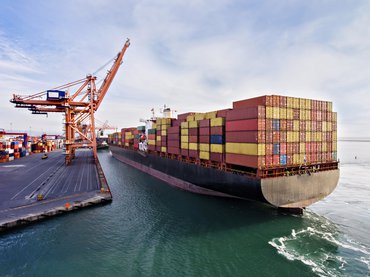Many of the ingredient sourcing challenges that began to emerge last year because of supply chain disruptions are expected to continue at least through the end of this year, and maybe longer, according to specialty food makers interviewed by SFA News Daily.
Packaging in particular has been a sourcing challenge, said Julie Busha, CEO of The Busha Group. In fact, she said her co-packer had to begin obtaining glass jars from Turkey because they could not obtain enough from their traditional U.S.-based supplier to package the company’s Slawsa condiment.
“We are expecting the situation with glass to last at least another year-plus,” Busha said.
She cited three reasons for the glass shortage: a scarcity of the ingredients used in making glass, a lack of available labor, and the need for glass to make billions of COVID-19 vaccine vials.
In addition, consumer demand for many retail CPG products has been higher than normal for more than a year, which is also putting pressure on supply chains, Becky Renfro Borbolla, senior vice president, Renfro Foods, told SFA News Daily. Renfro Foods sells a range of salsas, cheese dips, and barbecue sauce, also in glass jars.
“As you might imagine, people ate salsa and products similar to ours during the pandemic because they were eating at home more, but the supply chain infrastructure hasn’t caught up yet,” she said. “We anticipate that it will take a while, and are doing our best to support vendors, partners, and all in the industry.”
At The Busha Group, Busha said the company has not been able to find a suitable plastic alternative to package its Slawsa, in part because its “hot-fill” packaging process requires packaging material that withstands high temperatures.
In addition, the company prefers to use glass because it is more sustainable, which is important to both the company and its customers, she said.
Other ingredients have also become more costly to procure, in part because of truck and driver shortages and other supply chain disruptions, according to reports. The Busha Group is paying double the usual amount for green bell peppers, for example, Busha said.
Other specialty food makers have reported procurement challenges for various other ingredients as well, including spices from overseas, as well as other packaging materials.
Nona Lim, founder of Nona Lim, which supplies bone broth, heat-and-eat noodle dishes and other products, said the disruptions in ocean freight have been the biggest challenge when it comes to sourcing packaging and ingredients. Freight costs, as well as costs for paper and packaging, have been increasing, she said.
Like others in the industry, Nona Lim is trying to refrain from passing its increased costs onto its customers.
“We have been absorbing them, but that’s not sustainable as a long-term solution if the costs do not improve,” Lim told SFA News Daily.
She said the company is seeking to manage its increased packaging costs by increasing the lead time used for planning, and tightening its sales and operational planning processes, as well as seeking cost efficiencies elsewhere to offset the increase in packaging expenses.
She cited constant communication and careful planning as keys to working through the sourcing challenges, for both ingredients and freight costs.
Lim said she is hopeful that product shortages will resolve themselves by next spring.
Jill Giacomini Basch, co-owner and chief marketing officer, Point Reyes Farmstead Cheese Co., said her company has also seen increased costs for packaging and other ingredients, as well as “dramatically increased” lead times for procurement.
In addition, the company has also been coping with short deliveries — supply orders arriving unexpectedly incomplete.
“We are very concerned about Q4,” she said.
Shipments of equipment from overseas have also been affected, said Giacomini Basch.
“All of the ships are full, all of the containers are full, and everything is getting hung up at the ports,” she said. “We don’t see that changing for another 18-24 months.”
Giacomini Basch said the company has resisted passing along its increased costs to its customers, however.
“Coming out of COVID, we have been doing everything we can to help our retail and foodservice and restaurant partners get back on line, so we have been absorbing that increased cost of goods,” she said.
Related: USDA to Spend $4 Billion to Strengthen Supply Chain; Maker Q&A: Industry Irritations.

